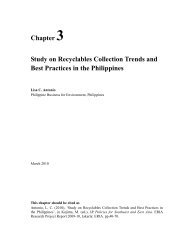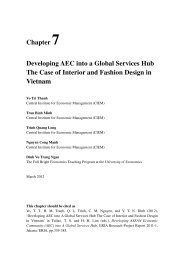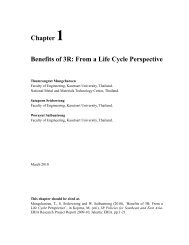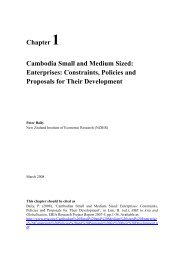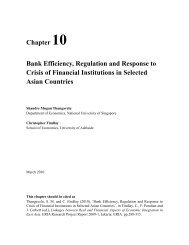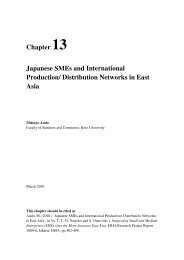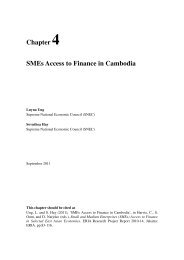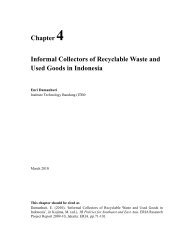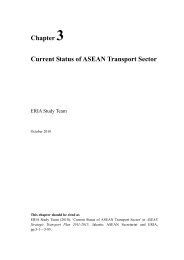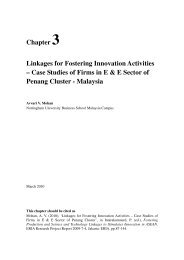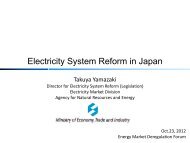Chapter 2 Cambodia - ERIA
Chapter 2 Cambodia - ERIA
Chapter 2 Cambodia - ERIA
You also want an ePaper? Increase the reach of your titles
YUMPU automatically turns print PDFs into web optimized ePapers that Google loves.
• Sub-decree on the Establishment of Protected Forest Areas for Recreation and HuntingSport in Oya Dav, Ratanakiri Province• Sub-decree on the Establishment and Conservation of “Sei Ma” Protected-Forest andBiodiversity Areas of Mondulkiri and Kratie ProvincesBesides contributing to the increase in crop productivity, the technologies mentioned earlier havealso contributed to the diversification of cropping systems by allowing farmers to shift frommonoculture rice cropping to multiple cropping systems and animal husbandry. This was shiftwas facilitated by the identification of appropriate soil types, timing, and crop-planting methodsbefore and after the wet-season rice cropping as well as crop-rotation patterns in upland areas.Moreover, the MAFF has conserved 2,557 accessions of rice germplasm and identified ricevarieties that are resistant to flood, drought, and the brown planthopper (BPH). It has alsoconserved the germplasm of other crops such as bananas, cassavas, chillies, and papayas, amongothers, in order to ensure the sustainable use of natural resources in <strong>Cambodia</strong>. In addition, thetransfer of these technologies has been promoted through improved linkages between researchand extension in the form of human resource-capacity development, including short and mediumtraining courses, field demonstrations, workshops, seminars, and conferences.Overall agricultural production increased from 2006 to 2008 aided by favorable weatherconditions and the efforts of concerned institutions to change farmers’ practices in crop farming,crop preservation, and harvesting and to increase irrigation capacity. The growth rate of theagriculture sector was 5.5 percent in 2006, 5.0 percent in 2007, and 5.7 percent in 2008. In 2008,the total cultivated land area was 2.61 million hectares. This translated to about 7.15 millionmetric tons of paddy rice, resulting in an average yield of 2.74 tons of rice per hectare and asurplus of 2.02 million metric tons of milled rice (see table 2.1).Livestock production moderately increased from 2004 to 2008 while the number of cattle raisedincreased by 2.5 percent on average per year. The number of pigs raised declined from 2.42million heads in 2004 to 2.21 million heads in 2008 due to an increase in the inflow of pigs andother pig-related products from neighboring countries. On the whole, however, the animalhusbandry subsector’s contribution to the economy has steadily increased and currently accounts83



